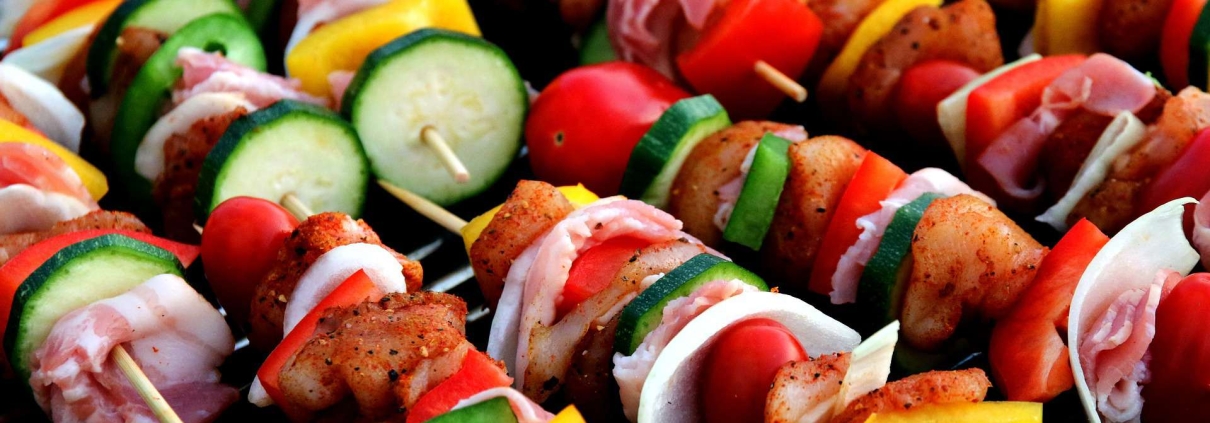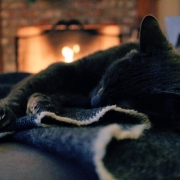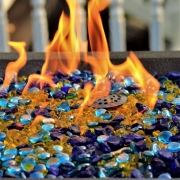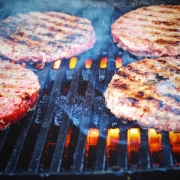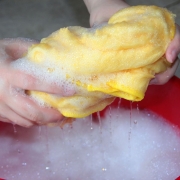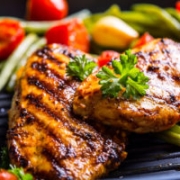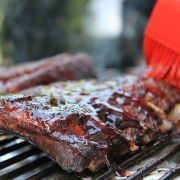The Ultimate Guide to Gas Grilling
Now that the weather is finally starting to break – we’re sure you’re thinking about breaking out the grill for the first cookout of the season!
If you currently own or use a gas grill, check out these tips for getting your grill ready and keeping it safe to use through the end of summer.
1. Keep Your Grill Clean
By maintaining a clean grill not only will you notice enhanced performance but also reduce the chances of a flare-up and incessant smoke. Both can burn the outside of your food and leave a bad flavor.
The best way to clean your grill is to turn the grill on high for 10 to 15 minutes to let any excess grease burn off. Then, just scrape off any leftover residue from the grill grates. Although a lot of the grease will be burned off during the high-temperature “cleaning,” you will still want to use a grill brush to help remove any leftover food and push any remaining debris into the grill itself. Remember, all this debris and food that is pushed into the grill will remain until a deep cleaning.
And don’t forget the grates and burners! Remove the grates and burner covers to thoroughly clean them at least twice a year.
2. Control Flare-Ups
Flare-ups from a cooking fire should always be controlled, no matter what type of grill you have. For that reason, you should always keep a part of your grill empty — in this case, you would need to move the food during a flare-up. When a flare-up does happen, move the food away and let it burn off with the grill lid up.
However, if the fire does spread, remove all food from the grill and let it burn off the grease as quickly as possible. If the fires should suddenly go out of control, remove all food and turn off burners and gas while leaving the lid open so the fire can die down on its own.
3. Barbecuing the Right Way
Barbecue chicken are often a cookout favorite. Sugar burns quite easily, so foods that are coated with a rub or sauce are more likely to burn during gas grilling. But there are aways to keep your chicken from burning on the outside while staying raw on the inside.
You also want to cook your chicken not directly on the flames but the cooler side of the grill. Keep the flames between low and medium low and cover the grill to keep the heat trapped inside. By keeping your grill temperature below 265 F, you can prevent charring the outside of your food and have a nice, even cook on the inside.
4. Watch Your Grill
Nothing ruins a cookout faster than burnt food. Most often this happens when you walk away for just a moment or become distracted.
When gas grilling, it is important to pay close attention to the grill – especially for burgers, chops, and steaks which are cooked at a higher temperature very quickly. By having your prep done before the food hits the grill, you’re less likely to burn your food.
5. Have Plenty of Fuel
Planning a cookout? Always be sure to have an extra tank of gas on hand in case you run out! But how do you know how much gas is left in the tank?
First, check the gauge of your propane tank before the big party. However, if your tank doesn’t have a gauge, there are ways to check if you’re low on gas. Using a small bucket of warm water, pour the water along the top side of the tank. Feel the tank to see where it’s warm and where it isn’t. The cooler spot is where the propane is sitting whereas the warmer spot is empty. Although this isn’t the most accurate of methods, it still gives you a good idea of how much propane you’re going to be working with.
6. Food Safety
Practice food safety whenever you cook (and prep!). This means never use the same cooking or prepping tools for uncooked meats and veggies. You should also use a clean plate for placing cooked meats. Never reuse dirty plates that have been exposed to raw meats. That’s the best way to poison your guests!
7. Cook at the Correct Temperature
Always use your best discretion when gas grilling. Although your grill does have a high setting – it doesn’t mean it should be used for everything. For example, thin cuts of lamb, pork, and beef should be cooked quickly and at a hot temperature. However, fish, veggies, and chicken should be cooked at a medium temperature. Roasts, like a whole chicken, should always be cooked at a low temperature. It make some time to cook at a lower temperature, but it’s worth it in the end!
8. Searing
Searing is one of the secrets to keeping the great flavor. To sear, start with the grill as hot as it will go. Once you put the meat on, wait a minute to flip and reduce the heat. The high temperature will end up caramelizing the meat’s surface leaving a great taste!
9. Indirect Gas Grilling
Indirect gas grilling lets you get more use out of your grill. You can cook entire chickens, roasts, and even bake bread! Simply just turn off the burners that sit directly under where you have placed the food on and let the surrounding burners do the work.
10. Maintaining Your Grill
Performing regular upkeep and cleanings on your grill will extend the life of your grill and result in better-tasting food. You should regularly check the ports are not clogged and there are no issues with the starter. If your ports are clogged, use a thin wire or pipe cleaner to remove the obstruction. Now you’re ready for some great months of grilling!
If you’re looking to up your grilling game, how about a new propane grill from Keystone Propane? Stop by our showroom today to see what we have in stock for you this season.

